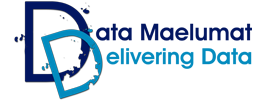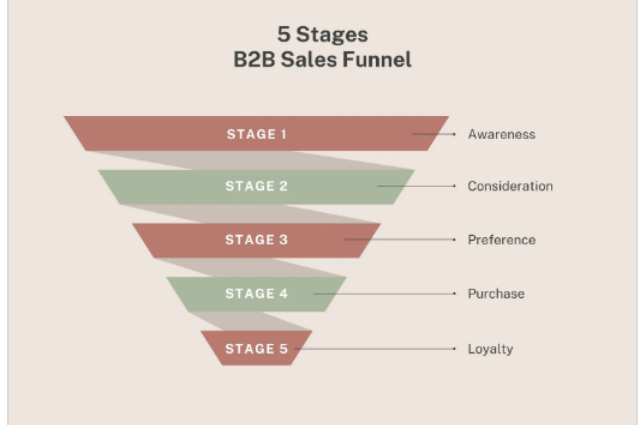The B2B sales funnel is a practical methodology for determining the strategies that will convert unknown visitors to a website into identified contacts, prospects, and qualified leads into customers. The challenge is to deliver information adapted to each stage of the decision-makers purchasing process.
But what is the exact definition of the sales funnel?
How to set it up to optimize your sales?
Let’s take a look at the 5 key stages of the conversion funnel, their analysis and their implementation.
What is a Sales Funnel?
A sales funnel refers to the buying journey that a potential customer goes through. This makes it possible to address the key information that a B2B decision-maker needs to have, depending on each of the different steps that lead to the purchase decision.
B2 B sales teams use the funnel to choose how to approach a potential client and decide what questions to ask and what information to provide to advance that client up the funnel.
A sales funnel is materialized by clearly identified steps associated with intelligently designed content to take the contact to the next step until the purchase.
What are the Stages of a B2B Sales Funnel?
Build Awareness
You must spread the word about your products or services before you expect to sell anything. The good news is that you may easily promote your business with the help of several sales funnel tools.
Your marketing strategy should include anything that enables you to reach new prospects on pertinent platforms and spread awareness of your products or services.
You are now drawing all potential customers into the funnel by raising awareness of your brand, your products, and the services offered by your company.
Here are some strategies for raising awareness:
- Promotions and posts on social media
- Blogging and guest posting
- Webinars and whitepapers
- Infographics
Create Interest
Attracted potential customers’ attention and sparked their want to learn more. You can use content production to stimulate the people’s interest in the company you initially drew during the awareness phase.
They begin to view you as a potential answer to their queries as they start to seek solutions for their problems.
Focus on the following content categories at this phase:
- E-mail marketing
- A lead magnet
- Chatbots
- Campaigns for retargeting
By doing this, you can keep in touch with them and start a conversation while also giving them more specialized and pertinent information that helps them in making decisions that will, hopefully, be in your favour.
Engage Buyers
Getting visitors to make purchases is the sole goal of a sales funnel. The customer has perused your sales pages, viewed your webinar, or browsed your online store and is now determined to make a purchase from you.
You will experience increased conversion rates and more purchases since everything in your funnel works to get you to this point.
The following should be used because this is the action stage:
- Customer or insider success stories
- Special discounts
- Bundled services
- E-mail follow-up campaigns
Leads turn into potential customers at the end of this phase. If your leads don’t have a significant impact on the ultimate purchasing decision directly, make sure they bring important decision-makers along to your initial meeting. By doing so, you may influence the right individuals directly rather than having an employee relay your sales pitch.
Purchase Made
At this point, your prospects make their final decisions. Although they are at the end of the customer journey, they may still need a few more one-on-one interactions before they make a purchase from you.
Pay attention to messaging that reaffirms your capacity to address their demands and the potential outcomes they might experience after working with your business. This level of the B2B sales funnel is when leads convert to customers.
In order to approve a deal, the clients may:
- Place a purchase order.
- Make a contract.
- Provide the details of their credit card.
Customer Retention
You don’t want a new consumer to leave once you have them. To increase their retention rates, B2B salespeople must keep fostering their client connections. After all, a 5% improvement in retention might boost your earnings by up to 95%.
Keep your clients engaged in returning by:
- Referral programs
- Campaigns to upsell
- Campaigns for e-mail re-engagement
Customers should be engaged consumers who adore your product or service and are passionate about your brand at the conclusion of the purchasing procedure. Customers who are loyal to you will do business with you for a lot longer and are frequently eager to offer recommendations or testimonials if you ask.
Conclusion
Data collection, analysis, and funnel optimization are necessary if you want improved results. You must assess your own strengths and weaknesses.
Do you excel at closing but struggle with raising awareness?
Despite being a pro in your profession, are you having trouble making sales?
These questions will help you identify the areas where your sales funnel needs improvement. Afterwards, focus all of your efforts there. A thriving company will have an efficient people flow from the top all the way down to the point of purchase.

